Art Fairs
Twin Artists Are Creating Uncanny Experimental Drawings of the Armory Show as It Happens
Ryan and Trevor Oakes have been called a "human camera obscura."
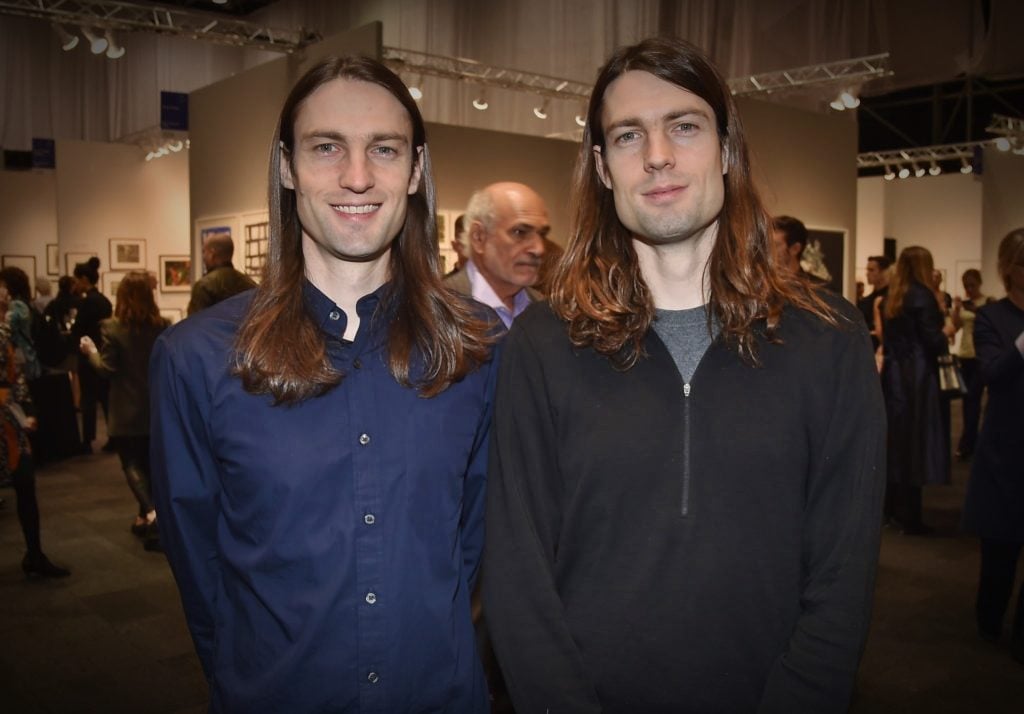
Ryan and Trevor Oakes have been called a "human camera obscura."

Sarah Cascone

The Armory Show is an ephemeral world, a miniature city of artists and collectors that springs up each March on the far West Side of Manhattan. This year, the hustle and bustle of the fair is being documented for posterity by the Oakes Twins, whom, if you look up, you might spot atop a raised platform overlooking the sea of booths on Pier 94, carefully tracing the scene below.
New York’s Ronald Feldman Gallery has dedicated their Armory Show presentation to Ryan and Trevor Oakes. Over the last 10 years, the brothers have developed an ingenious technique that allows them to take full advantage of our optical abilities in order to capture the world as we see it accurately: working freehand, they render real scenes in perfect proportion and precise detail. The resulting drawings, panoramic views on concave sheets of paper, are mind-blowing—but to truly understand their process renders them even more remarkable.
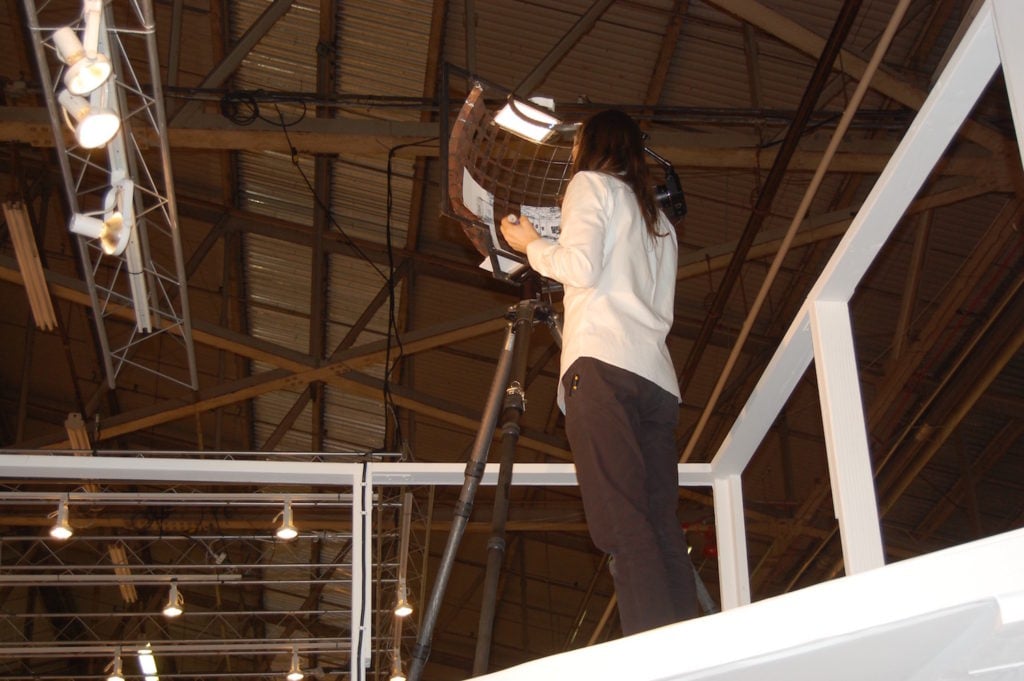
Trevor Oakes of the Oakes Twins at work at the Armory Show. Photo courtesy of Sarah Cascone.
What’s going on is similar to a camera lucida, a drawing aid that reflects an image on paper using a prism. Astonishingly, the Oakes twins have figured out a way to get that image on paper using their eyes alone. “When you look beyond something, automatically it divides into double,” Ryan Oakes told artnet News. “Your brain overlays the foreground and the background in a transparent veil.”
The twins have invented a semi-spherical easel at which they work, with a headrest that keeps their point of view steady. To begin drawing, they place a pen on the edge of the page, then focus on the world beyond it.
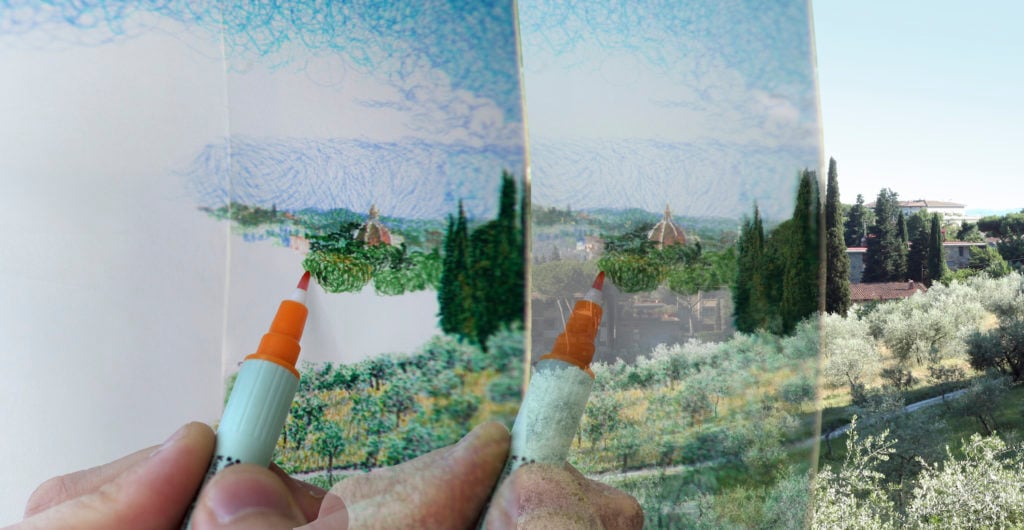
This photo illustration give you an idea of the optical double-ghost image used by the Oakes Twins, here drawing the Duomo in Florence. Photo courtesy of the Oakes Twins.
“It divides into two optical ghost pens,” one of which appears to float over the scene being rendered, said Ryan. “You can copy through it what you’re seeing behind it, and transcribe the proportion and scale of things into your drawing.” The method forces them to do small sections at a time, since otherwise their vista would be blocked by the canvas.
If that sounds crazy, you’re not the only one that thinks so. “It’s a bit madness inducing,” he admitted. “You’re sort of seeing something that your brain doesn’t want to see.” Ryan is leaving the drawing to Trevor this weekend, because his identical twin is “more comfortable with the optical doubling of space” that is necessary to the creation of their collaborative work.
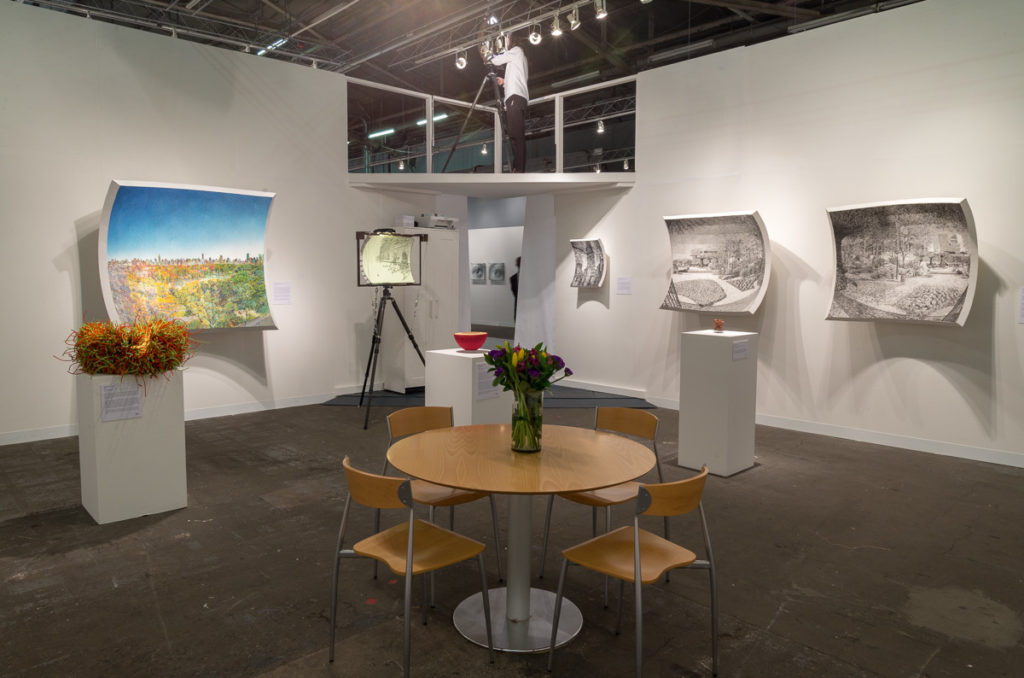
Installation view of the Oakes Twins’ work at the Armory Show. Photo courtesy of Ronald Feldman Gallery, New York.
Trevor, perched on a platform raised above the Feldman booth, will create a new drawing each day, capturing multiple views of life at the fair. A live video feed on the outside of the stand allows viewers to watch Trevor’s progress on the page. Because they work on site, there has always been a performative element to the Oakes twins’ work, but the Armory Show is throwing a fresh spotlight on their unusual process.
Priced between $15,000 and 22,000, the pieces are editions, made as pigment inkjet prints. Some are in black and white, others in color, made with a variety of mark-making techniques.
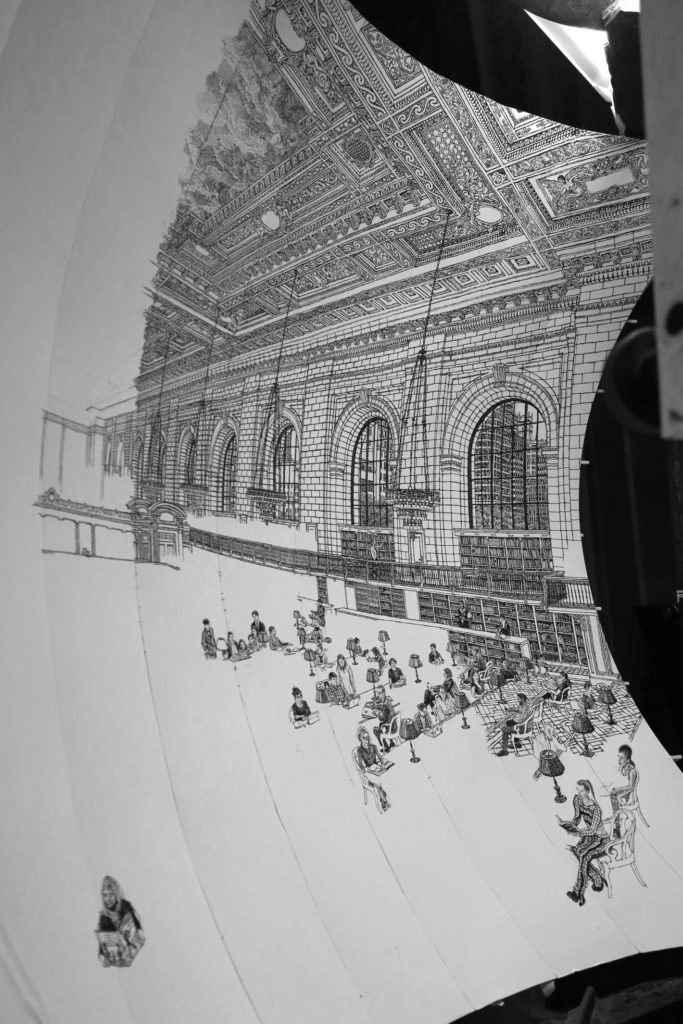
Detail of the Oakes Twins’ in-progress drawing of the Rose Main Reading Room. Photo courtesy of the artists.
“We’ve gone through a number of different styles, but it’s always exploring the root ideas that are driving the work,” Ryan explained.
The new Armory Show drawings are part of a new direction, which now includes interior spaces in addition to outdoor scenes. Their first indoor effort was the lobby of Chicago’s Field Museum. Currently, they are painstakingly tracing the Rose Reading Room at the New York Public Library, a months-long work in progress that is on view at the fair, about one-third complete.
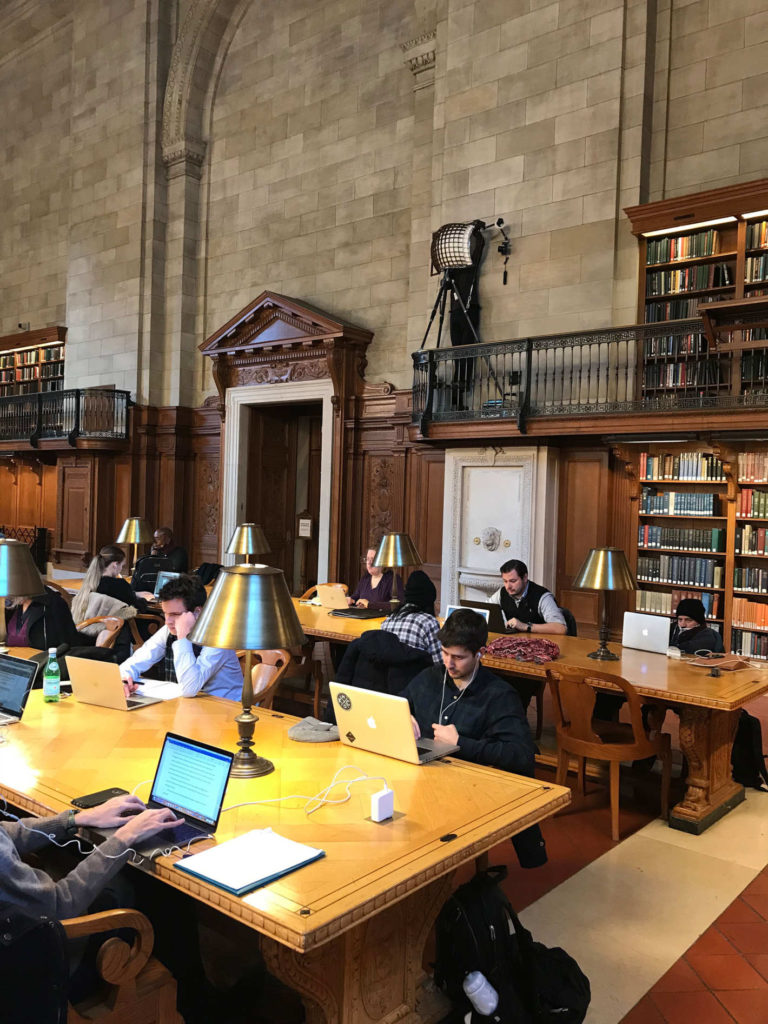
Trevor Oakes of the Oakes Twins working in the Rose Main Reading Room. Photo courtesy of the artists.
The Oakeses have drawn the view from the top of the Chrysler Building and majestic cityscapes of glamorous cities including London and Florence, so you might be surprised by Ryan’s favorite location.
“A snow-covered field in North Dakota,” he said. “To be able to stand out in the cold there for eight hours a day, we had to get full on down suits and all these layers. But then once you’re ready, you can hang out in this giant bird sanctuary where you would otherwise maybe hop out of the car, say ‘it looks beautiful,’ and then drive off.”